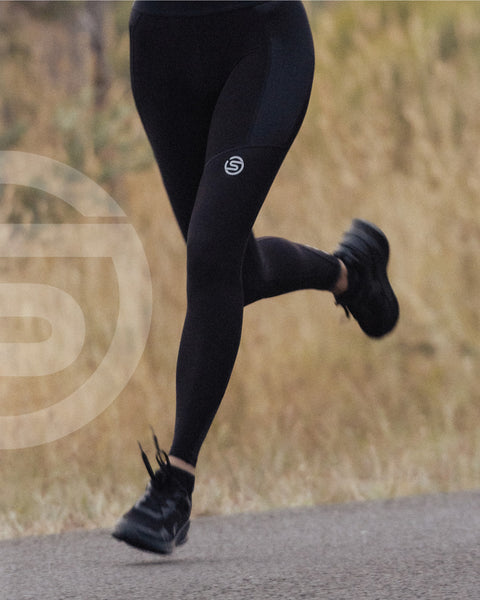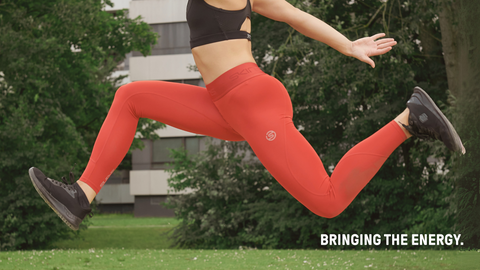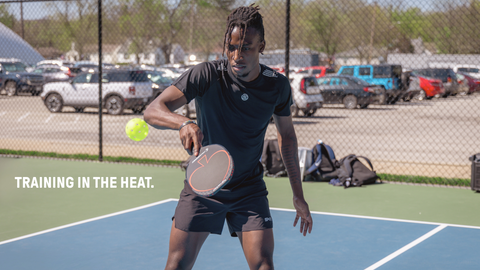In the final stretch of our 12-week SCA Training Plan, Coach Joshua is discussing Running Drills.
Running drills are an excellent way of improving your running form and adding extra running specific skill-based work to your training. We are big advocates that running and running fast is a skill and the way to get better at a skill is by practising. Running drills are a really easy addition to your training, all of which, if done consistently and week on week, will help your running.
RUNNING DRILLS
Coach Joshua splits drills up into three different categories: walking, bouncing and strides. Walking drills are a little bit more controlled and really help you practice your running form without applying the normal rhythm of running. Bouncing drills are a little bit more challenging to master but more running specific than the walking drills. Finally, strides serve as a whole practice drill where you can marry up the skills you worked on within your walking and bouncing drills and apply them to your running.
The reason for including drills in your schedule is that they help your balance and coordination. Runners find it very hard to stand on one leg, which is crazy considering when we run, we always have one foot off the floor! Joshua regularly asks his athletes if they can stand on one leg, and most of them really struggle. If you can improve at standing on one leg in a running position, you can create a more stable foundation upon which you can build your running form. When you've improved your stability, you can progress into more running-specific drills by adding the rhythmic elements within the bouncing drills. This can then transfer into your running action by doing strides to focus on the aspects of your technique that you have been working on.
An easy way to break this process down is by creating a more effective knee drive. To improve your knee drive, you can simplify it by first working on your hip mobility through walking leg tucks. This would enable you to get a better knee drive with a walking A-drill as your hips are more mobile. This drill helps you focus on getting your knee up to 90 degrees. You would then progress this into a skipping A-drill, then high knees before completing some strides where you focus on increasing the knee drive whilst you run. Hopefully, you can see how we break down the technical elements into different components, practice it in isolation, and then start to increase the intensity of the practice, making the drill more applicable to your running
TYPES OF RUNNING DRILLS
When implementing drills into your training, look at the following:
- Walking drills are something you can implement before a session or easy run as an activation and mobilisation exercise.
- Bouncing drills are something you can implement as part of a warm-up for an intervals session or as a specific session in themselves.
- Strides typically can be done around any session but always do these before an intervals session, after an easy run and the day before a race or session. It's essential to stay consistent with these drills within your training. Two or three 10-15min sessions each week over time can have a positive influence on your running.
Members, check out the SCA Instagram for visual demonstrations of the drills. Continue reading for a detailed written explanation of the drills.
RUNNING DRILLS EXERCISES
Walking Drills: Walking Leg Tucks, A-Drill, Ankle Touches and Ankle Walks.
Bouncing or Rhythmic Drills: Skipping A-Drills, B-Drills, High Knees and Straight Legged Running.
Strides: Between 4 and 6*80-100m or roughly 15 seconds at a pace faster than you would run a 5km.
RUNNING DRILLS EXPLANATIONS
Walking Leg Tucks – Drive your knee up to 90 degrees, clasp your hand together, hold your raised leg just below the knee, and pull your knee into your chest. Keep your toes pointing to the sky and go up on the forefoot at the end before cycling through onto the opposite leg.
Walking Hamstring Touches – Start by putting your right heel into the ground out in front of you. Put your hands on your hips and push them down the back of your hamstring, getting as close as you can to your ankle. Keep a straight back whilst doing this. Repeat on the other leg.
A-Drill – Hip and Knee angle need to be at 90 degrees no more! Toes should always be pointing to the sky. Shoulders relaxed and maintained running arms to engage your core. Head up to maintain good posture.
Ankle Walkouts – This is essentially a forward's moonwalk. Start with your hands on your hips, looking forwards. Drop your hips slightly and put your right heel into the group, with your toes pointing upwards as high as they can. Then simultaneously lift the left foot off the floor, push your right foot through the ground until you are onto your toes, and repeat on the other leg.
Skipping A-Drill – Like the walking drills, you are aiming to practice getting your knee into the 90/90 position. This time you are going to bounce whilst doing it, which requires some rhythm and coordination! Start with two feet on the ground, then drive up with the right knee, bring your feet back together and then repeat on the left. Each step requires a bounce. Right Knee, Together, Left Knee, Together etc.
Skipping B Drill – Similar to the A Drill, but instead of bringing the knee just up and down, you will add a flick with the leg at the end. Drive to 90 degrees at the knee, then cycle/flick the leg down to the floor and land underneath the centre of mass. Keep your toes turned upwards to land on the balls of your feet.
High Knees – Practicing driving the knees to 90 degrees in a running action. Do this over a short distance and aim for as many foot contacts with the floor as you can. Use your running arms, keep a stable core and straight back. Look forwards whilst doing this too.
Straight Legged Running – Lock your legs out straight and run almost like a pair of scissors landing on the balls of your feet. Ensure you keep a straight back and engaged core and don't create the range of motion by bending your back. Keep lots of small movements, to begin with, and lengthen your stride as you pick up speed.






